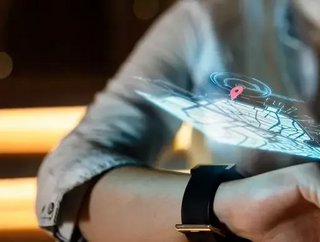Wearables could replace the smartphone sooner than you think

The mass-adoption of the smartphone has defined the century so far. The progression from landlines to mobile phones to ubiquitous high-performance computers in almost every pocket has been astonishingly fast. Now, as technologies like the cloud, the Internet of Things (IoT) and AI continue to reshape our ideas of what a smartphone is capable of, it’s worth asking: “what’s next?”
Over the past five years, wearables have steadily grown to fill a number of niches, from healthcare and exercise monitoring devices to productivity tools. As the IoT increasingly transforms everything from manufacturing plants to refrigerators into a “smart” device or sensor, generational improvements to the technology have the potential to turn wearables into a potential replacement for our smartphones.
However, so far, the technology has been largely limited to specific use cases by two main factors.
Interface issues
The first major hurdle between current generation wearables and a device that can effectively replace a smartphone is the issue of user interface. Let’s take the smart watch as an example.
By necessity, devices designed to be work rather than carried have smaller screens, meaning much less real estate can be dedicated, both to displaying information and to user inputs. Typing a text-message on a smart watch seems like a giant step back to the days of number pad inputs on mobile devices. While voice and gesture commands are getting better all the time, the technology undoubtedly hasn’t reached an inflection point.
The limits of isolation
The reason why most wearables have so far only been constrained to niche functions is the fact that their size and lack of connectivity to the world around them limits the number of things they can do, unless they’re paired with a parent device, relegating them to a role that’s little more than a glorified display screen.
“Many people found the first wave of wearables came up short. Entry-level price points were high, form factors were clodgy and accuracy left a lot to be desired,” writes Jen Quinlan, VP of Marketing at gesture recognition company Rithmio, in a recent piece for WIRED, adding that current generation wearables have a 30% return rate and a high number of product abandonments within the first six months.
Getting wearables right
There are a number of other issues that wearables will need to overcome before they can play a larger, more consistent role in our lives, let alone replace smartphones. Typically lacklustre battery life, high price points for relatively few functions, and freedom from parent devices, all problems that need to be solved.
However, the two core issues of interfacing and connectivity will still be the main bar to clear. Solving those problems could lead to the kind of device that could convince the average user to trade in their smartphone by the end of the decade.
On the display front, there are two technologies that could pave the way for a wearable smartphone. While both are in their relative infancy, the one we’re seeing the most progress from right now is flexible displays.
Samsung and Motorola were among the first to release folding phones, but they aren’t alone. As displays get thinner and increasingly flexible, the lines between a phone a futuristic snap bracelet get decidedly blurry.
The second breakthrough technology is probably one of the ones most firmly etched into our conception of a futuristic world: holograms. Using light to display a smart virtual screen, wearable smart devices would no longer be constrained by the limitations of their size, able to project out an interactive touch display which, in combination with increasingly capable gesture and voice controls - as well as Augmented and Virtual Reality interfaces - could begin to see a user interface experience that outstrips the capabilities of a single pane of glass.
Simultaneously, increased interoperability between wearables and their surroundings could further boost this user experience. As every sensor and device in the modern home becomes interconnected via cloud-based IoT and edge networks, the ability to use a smart bracelet as a universal remote (in a similar way that smartphones are becoming the controller for our smart homes today) will massively compensate for the lack of a six inch touch screen.
Imagine a keyboard and screen in your office with your smartwatch as the anchor device. Simply walk up to it, connect, and use the basic screen and keyboard to type up an email or essay that is stored in the cloud via your watch. Then, the next person who wants to use the screen and keyboard simply uses it as a display and input device for their own smartwatch.
The necessary computing power for smart devices to perform tasks like this also won’t likely be dependent on smaller, more powerful hardware, but rather, on the kind of connectivity that can host increasingly powerful virtual machines remotely, that are then accessed via a smart device.
Obviously, this kind of omni-channel connectivity and cloud native smart devices aren’t with us yet, but given the speed of innovation between the iPhone One and Samsung’s Galaxy Fold, it’s no great leap to expect that these kinds of innovations could be a transformative force in our day to day lives before we ring in 2030.






